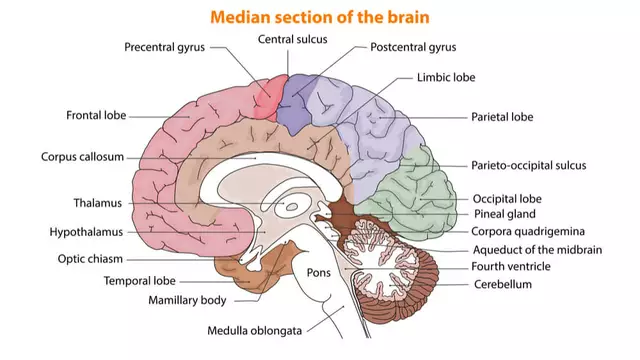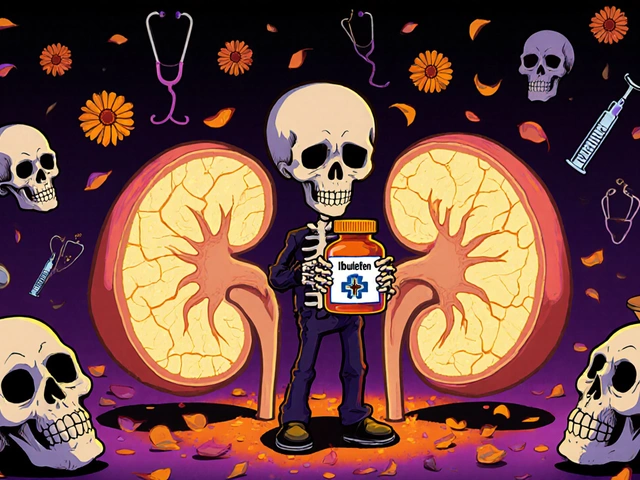Self‑Care Essentials for Chronic Heart Failure Patients

Chronic Heart Failure is a progressive condition where the heart cannot pump blood efficiently, affecting over 26 million people worldwide. When the heart’s output drops, fluid builds up, shortness of breath spikes, and everyday tasks become exhausting. Disease patients often wonder how to regain control. The answer lies in self‑care, a set of daily actions that keep symptoms in check, reduce hospital readmissions, and preserve quality of life. This guide shows exactly what to do, why it matters, and how to tailor a plan that works for you.
What Self‑Care Means for CHF
Self‑care is a patient‑directed routine of lifestyle, monitoring, and medication practices designed to stabilize heart function and prevent decompensation. It isn’t a one‑size‑fits‑all checklist; it’s a dynamic toolkit that adapts as your symptoms change. The core goal is simple: keep the heart’s workload within a safe range while preserving independence.
Core Pillars of Self‑Care
- Sodium Restriction is a dietary strategy limiting salt intake to prevent fluid retention. Recommended limit: 2g (≈2,300mg) per day for most patients, lower (1.5g) for severe cases.
- Fluid Management involves tracking daily liquid consumption and often restricting total intake to 1.5-2L, depending on NYHA class and doctor advice.
- Daily Weight Monitoring is a quick early‑warning system; a gain of 2lb (≈0.9kg) in 24hours signals fluid buildup.
- Physical Activity refers to low‑impact aerobic exercises (e.g., walking, stationary cycling) 30minutes most days, tailored to tolerance.
- Medication Adherence is the disciplined intake of ACE inhibitors, beta‑blockers, diuretics, and other prescribed drugs at the exact times and doses.
- Symptom Monitoring - watching for increased shortness of breath, swelling, or fatigue.
- Emotional Wellbeing - managing depression, anxiety, and stress, which directly affect heart function.
Comparison of Key Self‑Care Components
| Component | Target Metric | Recommended Limit / Goal | Monitoring Frequency |
|---|---|---|---|
| Sodium Restriction | Daily sodium intake | ≤2g (2,300mg) | Every meal |
| Fluid Management | Total fluid volume | 1.5-2L/day | Log after each drink |
| Weight Monitoring | Body weight change | ≤2lb gain/24h | Morning, after voiding |
| Physical Activity | Exercise minutes | ≥150min/week moderate | Weekly log |
| Medication Adherence | Doses taken | 100% compliance | Daily checklist |
Designing Your Personal Self‑Care Plan
- Assess Baseline. Record current weight, blood pressure, NYHA class, and daily habits.
- Set realistic targets. Use the table above to pick limits that match your physician’s advice.
- Choose tools. A kitchen scale for sodium, a 1‑L bottle for fluid tracking, a digital scale for weight, and a phone app for medication reminders.
- Create a daily routine. Example morning routine: weigh, log weight, review meds, record fluids.
- Schedule weekly reviews. Compare logs with your clinician or telemonitoring service.
- Adjust as needed. If weight rises >2lb in 24h, cut fluids by 500ml and call the clinic.
This step‑by‑step approach transforms abstract advice into a habit loop: cue (morning), routine (weigh‑log‑meds), reward (feel in control).

The Role of Caregivers and Telemonitoring
Family members often become the eyes and ears that catch early warning signs. A caregiver can help by:
- Preparing low‑sodium meals.
- Keeping the fluid‑tracking bottle within reach.
- Observing swelling in ankles or abdomen.
Digital health platforms now offer telemonitoring dashboards that automatically upload weight and blood pressure data to your care team. Studies from the American Heart Association (2023) show a 30% drop in readmission rates when patients use remote monitoring combined with structured self‑care education.
Common Pitfalls & Pro Tips
- Pitfall: “I’m too busy to weigh every day.” Tip: Keep the scale next to the bathroom mirror; it becomes a habit in under a week.
- Pitfall: “I can’t give up soup.” Tip: Choose low‑sodium broth and add fresh herbs for flavor.
- Pitfall: “Skipping meds feels fine.” Tip: Use a weekly pill organizer with colored compartments; each compartment is a visual cue.
- Pitfall: “I feel sad and ignore it.” Tip: Schedule a 10‑minute mindfulness session after lunch; mood lifts often improve breathing.
When to Seek Professional Help
Self‑care is a safety net, not a replacement for medical care. Call your cardiologist or go to the emergency department if you notice any of the following:
- Rapid weight gain >3lb (1.4kg) in 24hours.
- New or worsening shortness of breath at rest.
- Severe chest pain or palpitations.
- Persistent cough producing pink frothy sputum.
Early intervention can prevent full‑blown decompensation and keep you out of the hospital.
Connecting the Dots: Broader & Narrower Topics
This article sits inside a larger Heart Failure Management cluster. Broader subjects include overall cardiovascular disease prevention and medication optimization. Narrower follow‑ups you might explore are “How to Read a Food Label for Sodium”, “Designing a Home Exercise Program for NYHA Class II”, and “Using Wearable Devices to Track CHF Symptoms”.

Frequently Asked Questions
How much sodium is safe for a chronic heart failure patient?
Most guidelines recommend ≤2g (2,300mg) of sodium per day. Patients with severe fluid retention may be advised to stay under 1.5g. The key is consistency and checking food labels.
Why is daily weighing so important?
Weight is the quickest proxy for fluid accumulation. A gain of just 2lb in 24hours signals that the body is retaining fluid, prompting early adjustment of diuretics or fluid intake.
Can I still exercise if I have heart failure?
Yes-low‑impact aerobic activity improves circulation and reduces symptoms. Aim for 30minutes of walking or gentle cycling most days, but stop if you feel undue shortness of breath.
What role do caregivers play in self‑care?
Caregivers help with meal preparation, fluid tracking, medication reminders, and spotting early symptom changes. Their involvement reduces readmission risk by up to 30% according to recent AHA data.
Is telemonitoring worth the cost?
When paired with a structured self‑care plan, telemonitoring cuts hospital visits by roughly one third. Many insurers now cover basic remote weight‑and‑BP kits for CHF patients.







💡They’re hiding the real cure behind sodium limits-wake up!
In the austere theater of cardiac care, the mere suggestion to “just watch your weight” feels like a bland garnish on a gourmet tragedy. The author posits a checklist, yet neglects the malignant undercurrents of pharmaceutical mismanagement – a glaring oversight. One cannot simply advise “walk more” without acknowledging the sociocultural shackles that bind many patients to sedentary existences. Moreover, the tone reeks of technocratic paternalism, as if a spreadsheet could substitute for nuanced bedside empathy. Honestly, if you’re looking for a miracle, you’ll need more than a low‑sodium broth and a pocket‑sized scale.
Let’s break the plan into bite‑size actions that fit into everyday routines. Start by placing the bathroom scale beside the mirror so weighing becomes a visual cue each morning. Pair that habit with a quick note in a phone app to log fluid intake; consistency beats intensity every time. When the numbers shift – a two‑pound gain – treat it as an early alarm and adjust diuretics or fluid allowance under your clinician’s guidance. Remember, self‑care is a marathon, not a sprint; incremental victories accumulate into lasting stability.
It is imperative, therefore, to recognize that adherence to a sodium ceiling, whilst beneficial, must be complemented by vigilant fluid monitoring; otherwise, the therapeutic gains become merely superficial, and the patient remains vulnerable to insidious decompensation; additionally, regular weight checks serve as a pragmatic proxy for fluid accumulation, thereby enabling preemptive intervention.
Keep the salt under 2 g, drink no more than 2 L, weigh yourself daily – simple, effective.
Hey folks, just wanted to say that I’ve found keeping a small notebook next to my coffee mug works wonders for tracking daily fluids – you write the amount as soon as you pour, and it’s easy to glance at before bed. It feels low‑key but honestly saves me a lot of stress when the doctor asks for numbers.
I hear the frustration, but concrete steps like a weekly medication pill‑box and setting alarms can bridge the gap between lofty rhetoric and daily reality. Small tools often beat grand theories when it comes to compliance.
Of course the pharma giants profit from keeping us tangled in vague guidelines – they want us to buy endless monitoring gadgets while the real fix stays buried under layers of red tape and corporate lobbying.
Honestly the data is clear – low sodium works but only if you actually read labels.
Enough with the passive advice; if you’re serious about heart health, start a strict routine today, no excuses.
Reading the guide, I noticed several spelling errors – “sodium” was once written “sodum”, which undermines credibility.
Seriously? A “quick tip” that ignores the fact many patients can’t afford a digital scale? Pathetic.
Love the practical steps! I’ve started the morning weigh‑in and already feel more in control – keep sharing these gems!
🌟Embarking on a self‑care journey for chronic heart failure is akin to navigating a vast, ever‑changing sea, where each habit is a lighthouse guiding you away from hidden reefs of decompensation. First, imagine sodium as the sand that clogs the engine of a ship; reducing it to a whisper of 2 g per day clears the passage for smoother sailing. Next, fluid intake becomes the tide – you must chart it carefully, lest the vessel list under excess weight. Daily weighing, then, is your compass, a simple act that reveals subtle drifts before they become storms. Physical activity, even a modest 30‑minute stroll, functions as the wind in your sails, propelling circulation forward without overexertion. Medication adherence is the steadfast crew, each pill a disciplined sailor keeping the vessel on course. Emotional wellbeing, often ignored, is the morale of the crew; a calm captain steers through fog more effectively than a frantic one. Caregivers act as seasoned first‑mates, spotting early signs of swelling that you might miss through the haze of daily routine. Telemonitoring devices are the modern sextant, transmitting real‑time data to the distant harbor of your healthcare team, ensuring you never drift too far from safe harbors. If you notice a two‑pound gain overnight, think of it as a sudden swell – trim the fluid intake and alert your clinician, just as you’d lower sails in a gale. Celebrate small victories; each day you stick to the plan builds resilience, much like a ship’s hull thickening with each voyage. Remember, consistency beats intensity: a gentle, daily routine outlasts occasional heroic efforts that quickly collapse under fatigue. Keep a journal, not just of numbers but of how you feel – triumphs, frustrations, and moments of peace – because narrative fuels motivation. Share your experience with a support group; collective stories become a beacon for those still lost in darkness. Finally, trust the process; the body, when honored with respect and routine, has an astonishing capacity for adaptation and recovery. 🌈Stay anchored, stay hopeful, and let each mindful choice be a steady hand on the wheel.
🧐So the “simple guide” claims that cutting sodium will magically cure everything – as if the heart isn’t a complex organ with decades of wear and tear. The reality is far messier, and glossing over that feels almost insulting.
Keep the salt low, track weight daily – that’s it.
It must be emphasized that adherence to the outlined self‑care regimen constitutes a non‑negotiable component of chronic heart failure management, and any deviation may precipitate adverse clinical outcomes warranting immediate medical intervention.
While poetic, the core message remains sound: consistency saves lives.